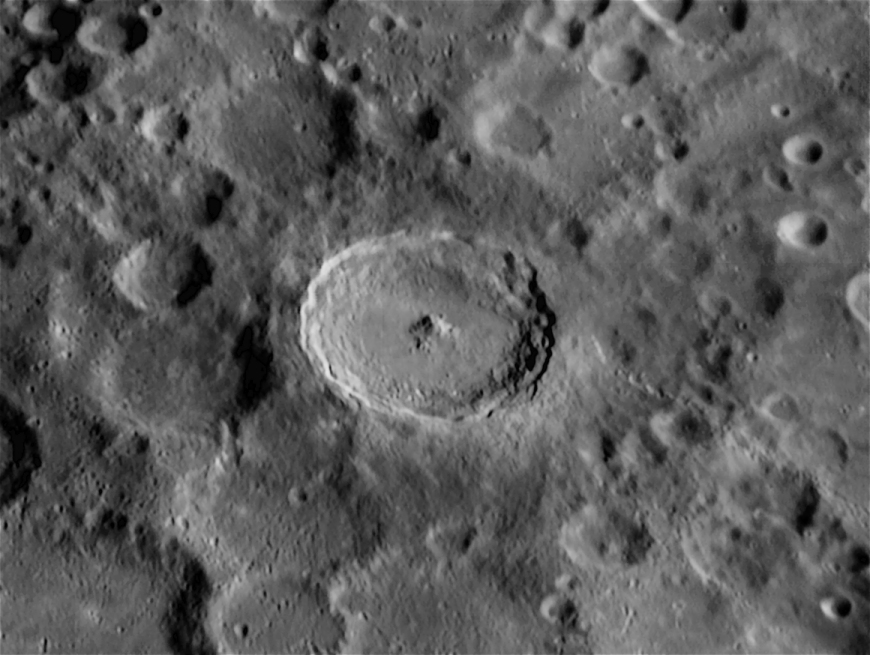
Tycho image by Mick Hyde
A hundred years ago imagined drawings of the Moon from the lunar surface included towering peaks and steep-rimmed craters. Those dramatic views do not represent most of the Moon, which generally has gentle slopes. Today this is such a common assertion that you might believe that low slopes are all the Moon has, but that is not true based on visual observations in the early 1960s. Howard Pohn used the Mt Wilson 60″ telescope to image the Moon but also apparently made visual lunar observations of craters under high solar illumination. He calculated how high the Sun was for various craters when their inner rim shadows were very thin. For 19 relatively steep craters he found that the average slope was 37°. The highest measured slope was for Menelaus (53°), and close behind was Copernicus (52°). Tycho’s maximum slope was 46°, as was Bullialdus, Birt, Dionysius and Theophilus. The most gentle crater rims were Plato’s whose slopes were only about 14°. Presumably, the large telescope Pohn used allowed thin shadows to be observed that might have been missed with smaller apertures. In the 1970s I calculated average slopes of 1587 mostly small craters whose diameters and depths we had measured on Lunar Orbiter IV photographs. For craters like Tycho these average slopes are nearly meaningless for they include the steep inner rim scarps and the broad, nearly horizontal terraces. But for terrace-free craters the slopes are quite accurate. For small, nearly bowl shaped craters slopes are 22° to 26°. Detection of shadows cast by crater rims is possible by amateurs using visual observing or imaging, and software makes determination of solar altitude at the time and place of observation easy. In general, the steepness of a crater interior is not of particular interest, but when humans are again exploring the Moon it will be very important to know rim slopes to see which craters it might be possible to drive into. My guess is that it will be impossible for nearly all relatively fresh craters.
I apologize to Mick and to Richard Bosman - I originally credited this image to Richard but it is actually Mick’s. Both were taken the same evening and are quite similar. It's what happens when I do an LPOD after midnight! Chuck
Technical Details:
Sept 12, 2006. C9.25, TOUCAM PRO, 4 x Imagemate.
Related Links:
Rükl plate 64
Howard Pohn (1963) New measurments of steep lunar slopes. Pub. Astro. Soc. Pac. 75, 186-188.
Charles Wood and Leif Andersson (1978) New morphometric data for fresh lunar craters. Proc. Lunar Planet. Sci. Conf. 9th, 3669-3689.
Mick’s website
A steep spot on the Moon
Yesterday's LPOD: The Sad State of Lunar Reference Material
Tomorrow's LPOD: L99 Captured!
COMMENTS?
Register, Log in, and join in the comments.



